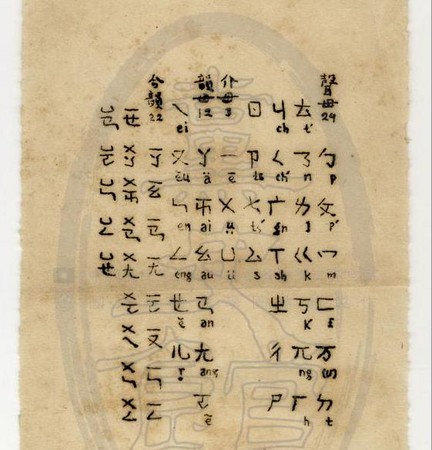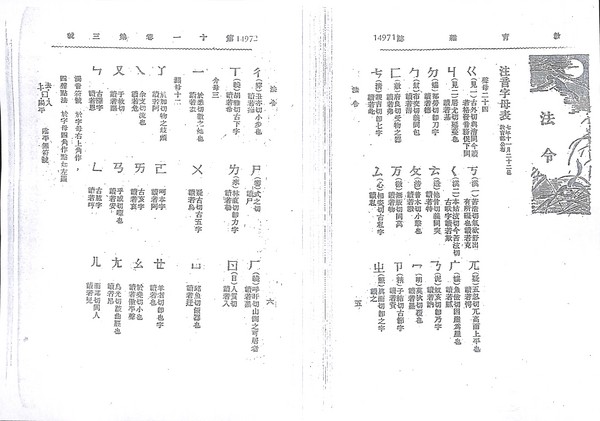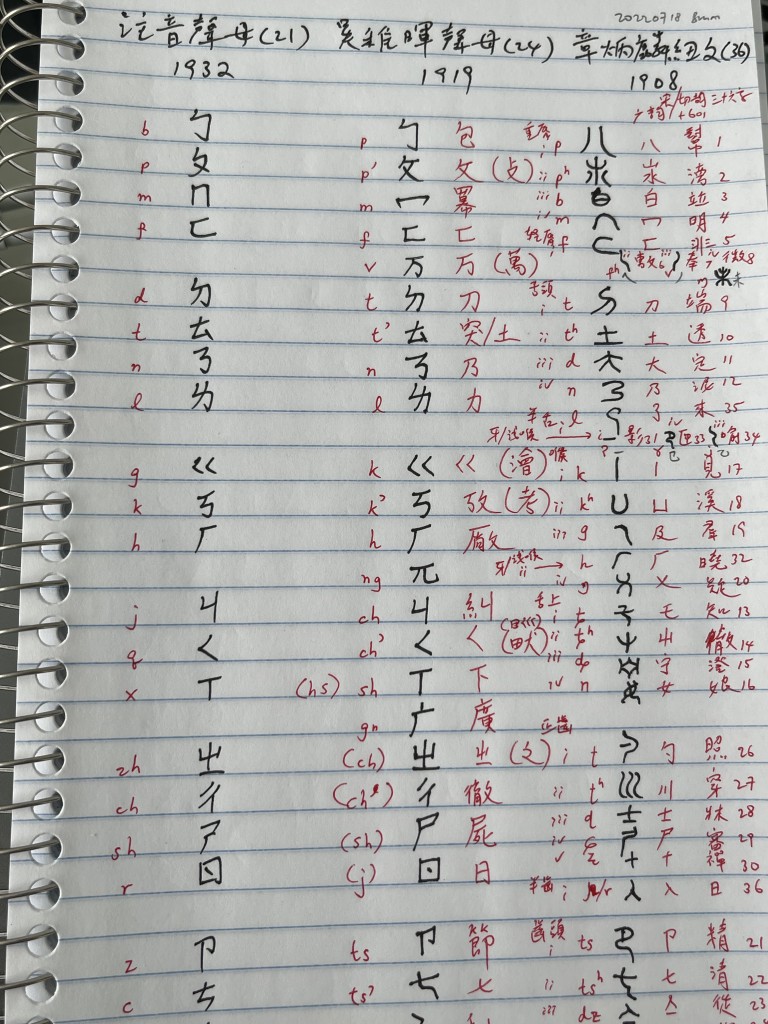It has often been said that the Chinese pobomofo alphabet was based on Zhang Taiyan’s 章太炎 seal script alphabet, inspired by Japanese kanas and described in his essay “Refutation against Esperanto” (1908). Here is my comparison of the bopomofo alphabet (1932, currently used in Taiwan) with Wu Zhihui’s draft (1919) and Zhang Taiyan’s system.
I’d suggest that the pobomofo is largely an invention of the “anarchist Esperantist” Wu Zhihui 吳稚暉, who was commissioned by Cai Yuanpei 蔡元培, the then Head of Bureau of Education. Wu’s system was certainly adapted from Zhang’s, but Wu had to make some important changes since the former is catered to modern Chinese dialects (later only for mandarin), whereas Zhang’s was based on the Middle Chinese phonetics, inspired by Sanskrit śikṣā sometime before the 6th century CE. Hence, in Zhang’s system there were 36 consonants, whereas in Wu’s only 24, and finally 21 in the current bopomofo. A few quirks in Zhang’s system survives in Wu’s bopomofo. For example the character 七qī is used for the pinyin “c” [ts'] and not “q” [t͡ɕʰ].
As a child I learned the bopomofo but never managed to connect the symbols to their original characters until now. Of course there is much more to it. One can still see the influence of the Sanskrit varṇamālā in its arrangement. And for its creator Wu Zhihui, the bopomofo was an expedient until the Chinese writing and language are eliminated and replaced by Esperanto, very much like capitalism to be replaced by socialism, and ultimately the anarchist paradise.

Wu Zhihui’s draft of Chinese alphabet (1919)

Official Chinese phonetic alphabet published by the Department of Education of the Republic of China government (1919)

A comparison of the three systems



